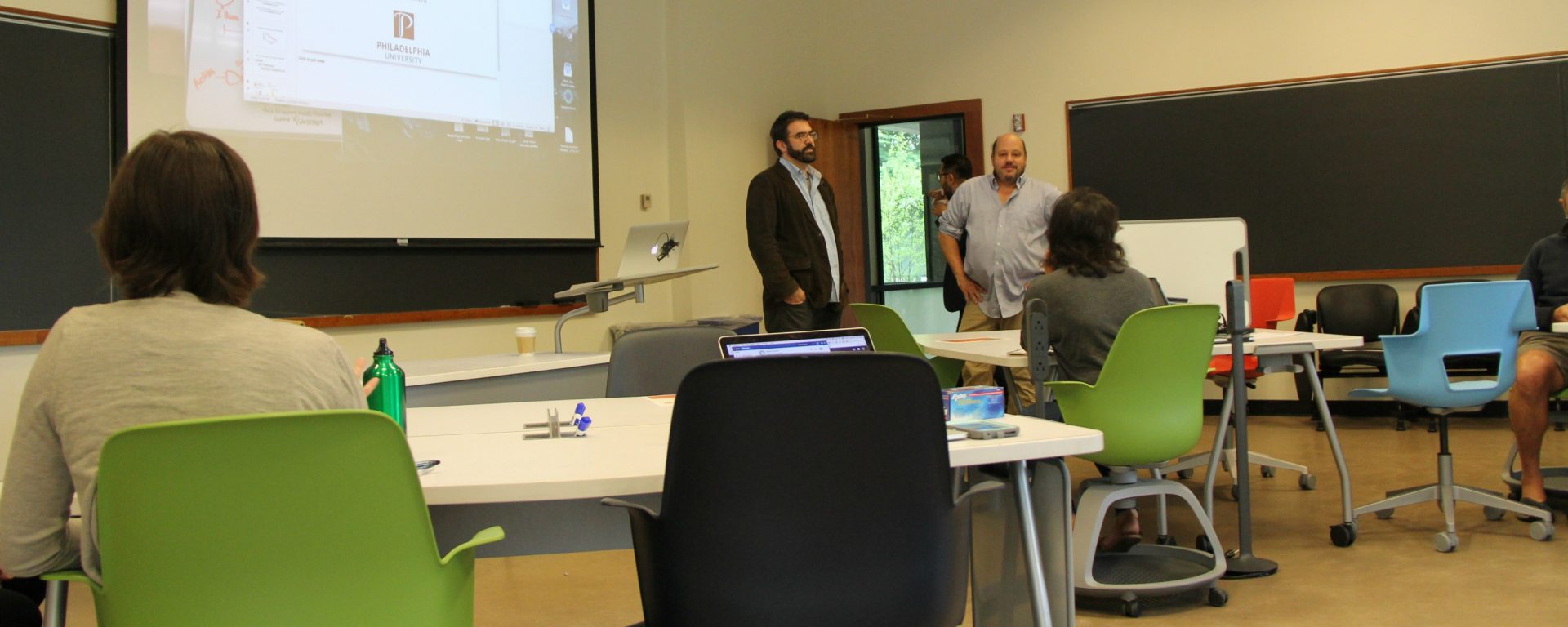Last week ITS hosted the Teaching with Technology Forum where we highlighted ideas and concepts around Active Learning. In an attempt to create an immersive experience for our faculty and staff, we invited guest speaker Jeff Klemens of Philadelphia University to give an interactive presentation on Active Learning. In addition, we completely overhauled the furniture in Kolhberg 115 to emulate an Active Learning Classroom (ALC). The furniture included tables and chairs that were all movable and divided into small groups. There were also small personal sized white boards placed around the tables for brainstorming and other collaborative activities, as well as mobile display monitors for each group. Jeff’s presentation was quite lively and inspirational. It yielded incredible feedback and opened up the floor for of tons of discussion and ideas.
Below are 5 takeaways from Jeff’s presentation on some of the advantages of Active Learning:
Advantages of Active Learning
-
It changes the default relationship to the classroom space
- Student’s aren’t just passively listening, the space “nudges” them to actively work in groups and solve problems together.
-
It provides space for collaboration
- Working in small groups with whiteboards or flipcharts gets students to sketch out ideas they don’t have fully formed.
-
Provides space to display ideas or models to peers and instructors
- Displaying small whiteboards or flipcharts with student work allows the other groups to see and compare, and possibly gain more perspective.
-
Ability to rapidly switch between learning modes allows for constant feedback and iteration of ideas
- Gives Instructor ability to move around the classroom providing more individualized support and direction to small group activities.
-
Platform for moderated / integrated use of technology, including personal technology
- Provides platform for the use of personal devices to connect and collaborate on work with peers, emphasizing the importance of the use of personal technology for class purposes only.
Concerns?
With this non-traditional way of teaching and learning there are tons of concerns. Some concerns from some of our faculty and staff in the audience were:
How much support from staff would be available?
How would we motivate students to be onboard with learning in such a different way?
How does the number of students in the class affect this style of teaching?
Will the furniture ever get moved back in its place?
Do you really need all this technology?
And the list goes on…
These are all valid concerns. One of the reasons why we asked Jeff to be our guest speaker is because he and his colleagues at Philadelphia University recently went through an Active Learning Space Intuitive where after surveying over 500 of their students, they self reported, significant gains in class participation, ability to focus, instructor feedback opportunities, and many other positives from learning in their new ALC compared to the traditional classrooms. But they too had to work through all of the major concerns listed above. From listening to Jeff’s presentation on his experiences, there has to be a plan and a system put in place in order to address these concerns that involves faculty, staff and students working together to shift cultural norms.
Research Behind Active Learning
If you are interested in reading more about the research behind Active Learning, please take a look at some of the links below.
Does Active Learning Work? A Review of Research. M. Prince.
Using Active Learning Instructional Strategies to Create Excitement and Enhance Learning. Jim Eison.
How Can You Find Out More?
We’d love to hear your thoughts on Active Learning! If you are interested in incorporating more Active Learning techniques and/or teaching in an Active Learning Classroom, please contact us with any questions you may have. For more information please email your Academic Technologist or you can reach us all at acadtech@swarthmore.edu.

